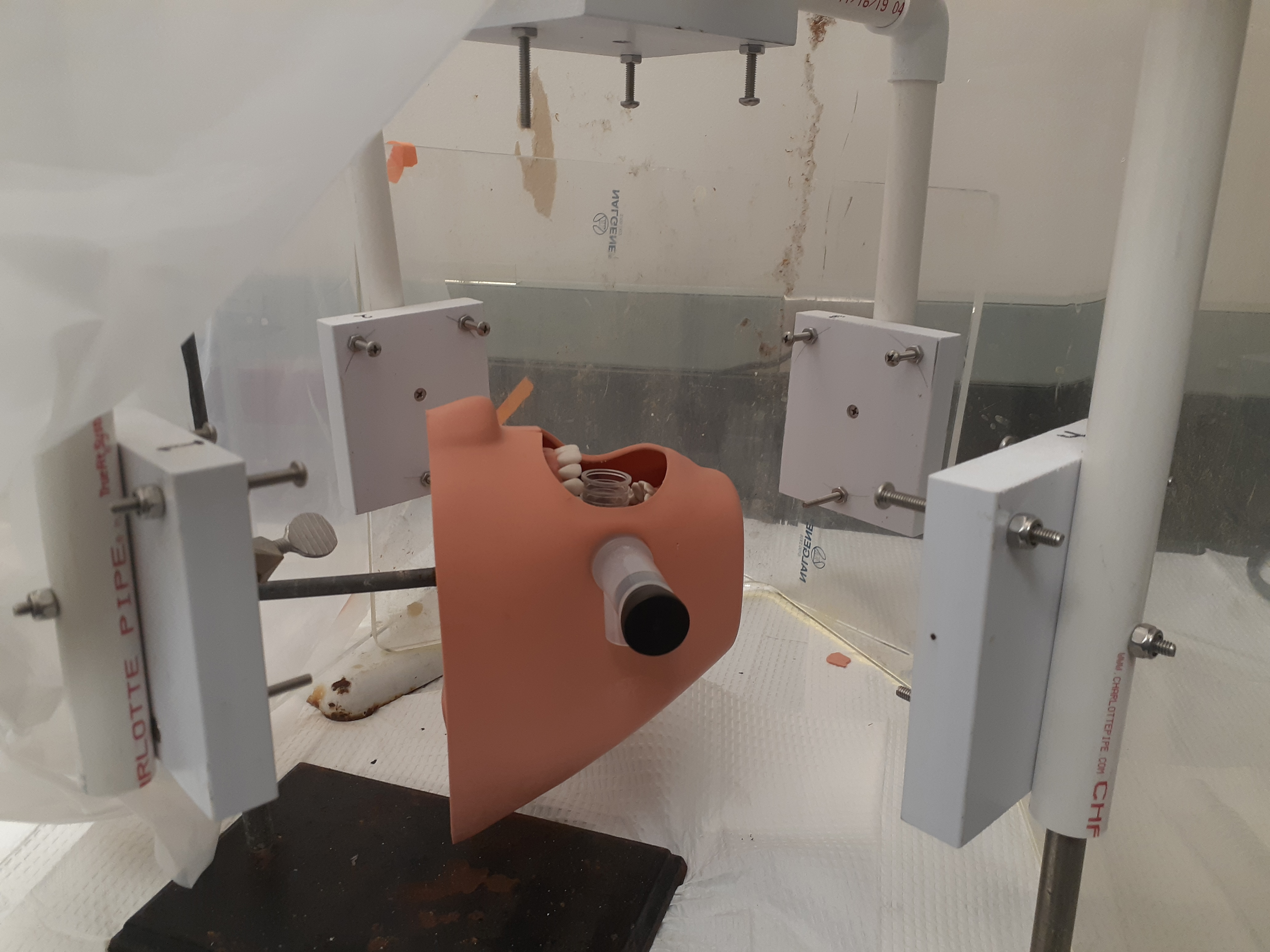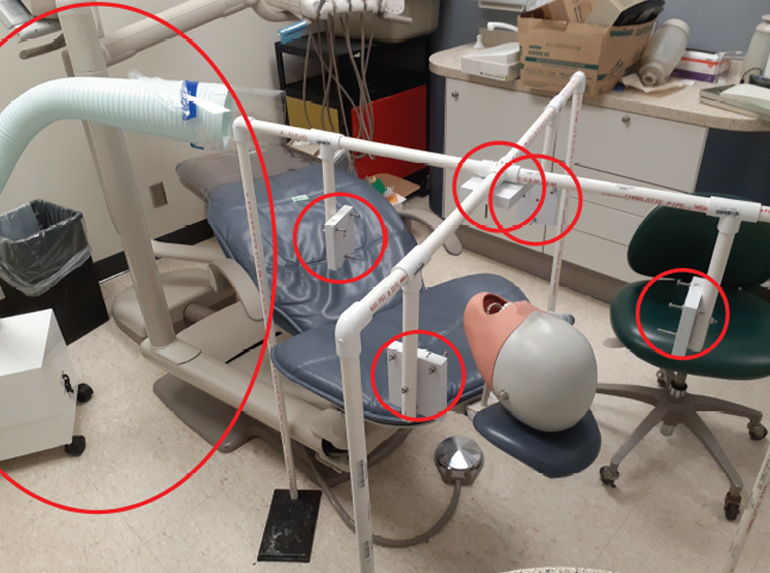Researchers Determine Best Ways to Decrease Aerosols Amid Pandemic
- ADEA Explores the Impact of COVID-19 on U.S. Dental Schools
- Boston University Henry M. Goldman SDM Appoints Dean ad interim
- ADEAGies Foundation Call for Letters of Intent Is Now Open
- Financial Aid and the FAFSA
- Positions Available?August 2021
- Encourage Your U.S. Dental School Seniors to Complete the ADEA Senior Survey
- Dr. Carroll Ann Trotman Named Dean of The Ohio State University COD
- Defining a New Track?A Strategic Focus for UBC Dentistry
- University of British Columbia FOD Celebrates Teaching Excellence
- Loma Linda University SD Professor Awarded $1.2M NIH K23 Grant
- Dental Hygiene Students Expand Education and Address Community Health Needs
- Prof. Wanda Cloet Receives Outstanding Service Award From Central Community College
- Work Now, Chill Later: Preparing for the ADEA AADSAS Application
- Researchers Determine Best Ways to Decrease Aerosols Amid Pandemic
- Academic Administrators, Apply for the IPEC Leadership Development Program
- University of Nevada, Las Vegas, SDM Welcomes Dr. Rosemary P. McPharlin
- Positions Available?June 2021
- How COVID-19 Impacts U.S. Dental Schools
- ADEA Urges COVID-19 Vaccine for Dental Schools, Programs
- New Mexico State University ? Do?a Ana Community College Perseveres Through Pandemic
- Call for Nominations for Chair-elect of the 2022-23 ADEA Board of Directors
- Dr. Linda Boyd Appointed to JDE Editorial Review Board
- Positions Available?May 2021
- Santa Fe Community College Honors Students at Pinning Ceremony
- Central Community College Introduces 3D Technology
- Volunteers Hold Free Dental Day for Arizona Veterans
- 2021 ADEA Annual Session & Exhibition Early Bird Rate Available Through Feb. 19
- 2021 Interprofessional Educational Collaborative (IPEC) Institute: Super Early Bird Registration Ends Jan. 15
- New Education Series Works to Improve Access to Care for Persons With Disabilities
- Congratulations to the 2021 #IamADEA Contest Winners
- Tufts University SDM Hosts Virtual Wellness Sessions to Ease Pandemic Anxiety
- Dr. Nicole Kimmes Named Interim Dean at University of New England CDM
- The Challenges of the ?Career Changer?
- Researcher Secures Patents for Innovative Student Assessment Technology
- Apply for ADEA Leadership Essentials for Allied Dental Educators (ADEA LEADE), Summer 2021
- Positions Available?February 2021
- What?s New on ADEA Connect?
- ADEA Releases Dentists of Tomorrow 2020
- University of Southern Indiana Dental Hygiene Students Address Food Insecurity
- This Month: Registration to Open for ADEA Fall Events
- Academic Integrity: How a Dental Hygiene Program Tackled Virtual Proctors
- Fostering International Dental Hygiene Education During a Pandemic
- Dr. George Blue Spruce Receives Lifetime Achievement Award
- Palm Beach State Dental Health Programs Adapt to New Normal
- Helping Dental Organizations Communicate With Their Members and Publics
- Make Yourself a More Competitive Applicant During Your Predental Summers
- Antibiotic Overprescription: Policy Considerations for Academic Dentistry
- Bringing Smiles Dental Enrichment Program
- ADEA Releases New Data on 2020 U.S. Dental School Applicants and Enrollees
- Program Targets Oral Health Care for Low-income Pregnant Women
- Dr. Marnie Oakley Named Interim Dean, University of Pittsburgh SDM
- Registration Opens Soon for the 2021 ADEA Allied Dental Program Directors? Conference
- Grant Promotes Oral Health Care Among Older Adults
- ADEA Announces Dr. Nader A. Nadershahi Chair-elect of the 2021-22 ADEA Board of Directors
- Health Professions Students Sharpen Collaborative Skills Through IPE
- Prof. Salima Alibhai Named a Changemaker by University of Washington School of Public Health
- Dugoni School Launches ?Dental Care is Essential Care? Public Service Campaign
- University of British Columbia FOD Researcher Helps Map the Human Proteome
- Celebrate the 2021 Gies Award Honorees! Gies @Home Awards Gala, March 12
- Finances and Other Important Decisions for Dental School Applicants
- New Video Series! Dental School and the Pandemic
- Opening Soon: Applications for ADEA Appointments and Nominations
- Prof. Victoria Patrounova Assumes New Role as Dental Hygiene Program Director
- Save the Date! April 28 Is 2021 ADEA Capitol Hill Day
- Positions Available?September 2021
- Apply for the ADEA Allied Dental Faculty Leadership Development Program by April 2
- Seattle Central College Welcomes New Faculty
- ADEA Welcomes Our Newest Members?May 2021
- Recipients of the 2021 Colgate Award for Research Excellence Announced
- ADEA Announces Winners of #ADEAConnectOneYear Contest and ADEA Connect Member Awards
- University of British Columbia FD Looks Forward to Fall Classes
- Spread the Word: 2021 ADEA GoDental Virtual Fair Starts Next Week!
- Student Stories In Their Own Words During a Pandemic
- New Educational Home for Alaska?s Dental Therapists Expands Training Capacity and Access
- Register for the Next IPEC Institute
- COVID-19 Brings to Light Inextricable Connection Between Dentistry and Medical Care
- Virginia Commonwealth University SOD Launches M.S. in Oral Biology
- Oklahoma University COD Announces Plans to Expand to Tulsa
- Call for Programs and Reviewers: 2022 ADEA Annual Session & Exhibition
- September 2021: MedEdPORTAL? Update
- ADEA/ADHA Graduate Dental Hygiene Program Aims and Outcomes Released
- Feb. 24: FREE Virtual Event for Internationally Educated Dental Graduates
- Share Your #IamADEA Story on Social Media Today and Win Prizes!
- ADEA Publishes Policy Brief on Combatting Antibiotic Resistance
- March 2021: MedEdPORTAL? Update
- Early-career Faculty: Register for the ADEA Emerging Leaders Program
- East Carolina University SDM Names Inaugural Assistant Dean for Diversity, Equity and Inclusion
- On-demand: 2021 ADEA Annual Session & Exhibition Key Takeaways and 80+ Sessions
- Financing Your Dental School Education: How Student Loans Work
- University of the Pacific Launches Certificate Programs for Dental Educators
- Dr. Sreenivas Koka Named Dean of University of Mississippi Medical Center SOD
- Dr. Lynne Opperman Named Interim Dean of Texas A&M Dentistry
- Liaison International Recognizes Dr. Karen West
- University of British Columbia FOD Student and Faculty Receive Colgate Awards
- ATSU Arizona School of Dentistry & Oral Health Opens Orofacial Pain, Oral Medicine and Dental Sleep Solutions Institute
- Positions Available?July 2021
- MedEdPORTAL? Update: June 2021
- Dr. Stephen Pachuta Named Dean of West Virginia University SOD
- Community, Students Benefit from Low-cost Care at New Concorde-Kansas City Campus
- Save the Date: 2021 ADEA Allied Dental Program Directors? Conference Is June 5?7 (Virtual)
- Positions Available?January 2021
- Dental Anesthesiology Residents on the Front Line in the Operating Room
- Positions Available?March 2021
- Two ADA Webinars Available to ADEA Members
- Dugoni School Holds COVID-19 Vaccine Clinic for the IDD Community
- ADEA Connect Library Undergoes a Redesign
- Seattle Central College Dental Hygiene Students Awarded Scholarships From Willamette Dental Group
- ADEA Publishes Online JDE Supplement of Advancing Through Innovation Articles
- UT Health San Antonio SOD Awarded HRSA Grant
- EatMoveGrow: A Partnership for Children
- Preparing for the ADEA AADSAS Application
- Pen to Paper: Working With Mentors, Students Gain Research and Writing Experience
A collaborative effort between University of Minnesota (U of M) researchers and clinicians made a real-life, immediate impact on patient care and safety concerns amid the COVID-19 pandemic.
 |
|
|
“Without this expertise, I don’t believe our clinics would have opened up as soon as they did,” said Paul Olin, D.D.S., M.S., Interim Associate Dean for Clinical Affairs at the U of M School of Dentistry (U of M SOD), of the project.
It all started in March 2020, when Minnesota Gov. Tim Walz halted all non-emergency dental procedures.
“In some respects, that did us a favor,” Dr. Olin said. It allowed him to take a step back and think through the risks of what he’d begun to suspect was an airborne pathogen. “We knew our existing PPE protected us from blood borne pathogens,” he continued, “but what about this new virus?”
Dr. Olin connected with Paul Jardine, Ph.D., a Professor in the Department of Diagnostic and Biological Sciences, and other experts, including:
- Rachel Uppgaard, D.D.S., Assistant Clinical Professor of Oral and Maxillofacial Surgery;
- John Madden, CDT, Allied Health Care Professional;
- Brent Larson, D.D.S., M.S., Director of Orthodontics and Professor of Developmental and Surgical Sciences; and
- Jeremy Anisman, Ph.D., Molecular Virology Researcher.
The team began to tackle a series of questions together: How does the COVID-19 virus spread throughout a dental office? What instruments make that spread worse? And what can we do to protect ourselves and our patients?
 |
|
|
Dr. Jardine used a nebulizer to aerosolize harmless bacterial viruses, bacteriophages, and studied their spread and capture by suction and air filtration devices. Dr. Olin, along with Gary Anderson, D.D.S., M.S., Professor of Developmental and Surgical Sciences who studies clinical measurement, and Judy Danielson, M.D.H., a Professor of Developmental and Surgical Sciences, simulated the dental environment by performing various procedures with high- and low-speed handpieces on a mannequin. U of M School of Engineering faculty Qusheng Ou, Ph.D., Jiarong Hong, Ph.D., and David Pui, Ph.D., used digital inline holography and laser sheet imaging to study aerosol flow throughout these procedures and the effectiveness of mitigation devices.
They found that an extraoral local extractor did the best job of decreasing aerosols that may transmit viruses while also being fairly simple to use. They plan to publish the results of their study, which have already been implemented in the U of M’s dental clinics.
Drs. Olin, Jardine and Anderson saw this project as a unique opportunity to work across disciplines.
“We’re two extremes,” Dr. Jardine explained. “Dr. Olin and Dr. Anderson are very clinically focused. Most of the people I talk to on a daily basis are structural biologists and biophysicists. That diversity led to incredible opportunities.”
Dr. Olin agrees, noting the study’s immediate clinical impacts. “The only way I could have justified the purchase of the mitigation devices I did, and be confident that they would work, was to work with Dr. Jardine to test them.”
For Dr. Anderson, the experience reflected the root of impactful research. “There was a real practical question we were wrestling with: How do we make sure we’re safe?” The ability to bring engineers, basic scientists and clinicians together to answer that question was “pretty astounding,” he said.
And it was a remarkable experience in putting impactful solutions into place quickly. “I typically expect the investment of my work to pay off in 10 to 20 years,” said Dr. Jardine. “This ability to work with people from different skill sets and focus on a critical issue with clinical faculty who took charge of the situation was really exciting.”
“I’m very proud of our school, because of how we responded so effectively and quickly, with full dedication to our mission: to provide the safest environment we can for our patients and staff,” Dr. Jardine said.
Courtesy of Molly Cruitt, Communications Manager at the University of Minnesota School of Dentistry
Published on May 12, 2021

